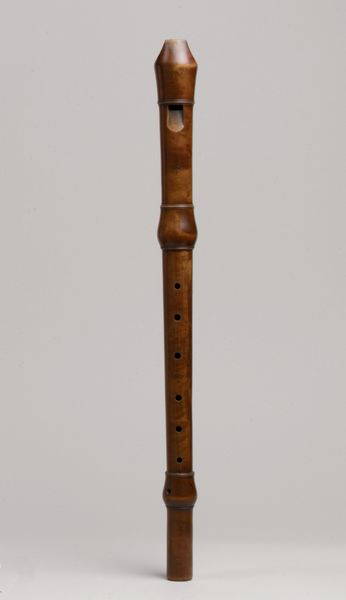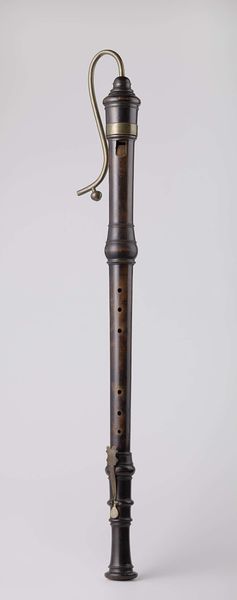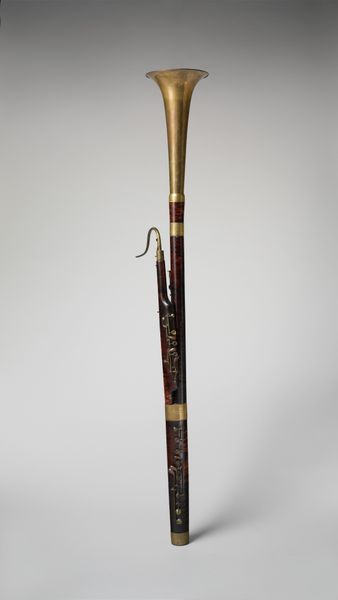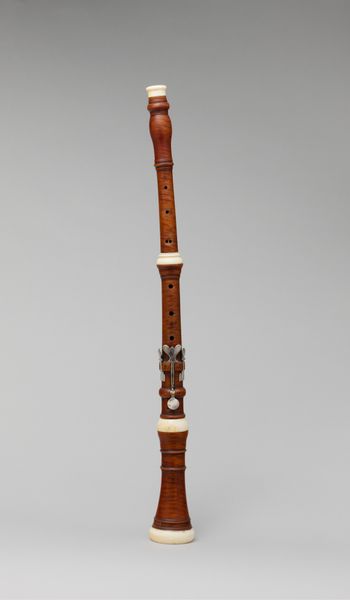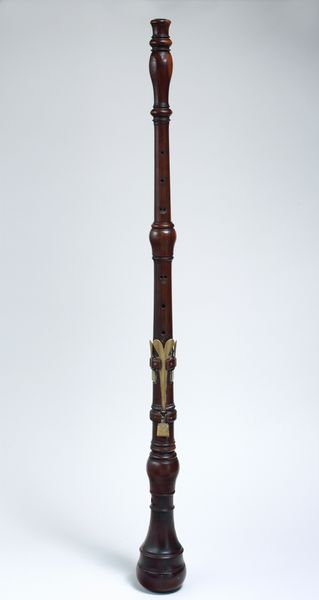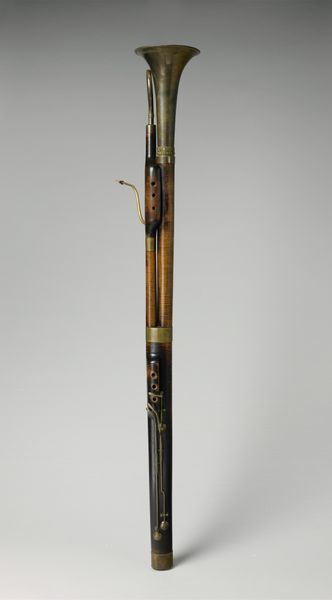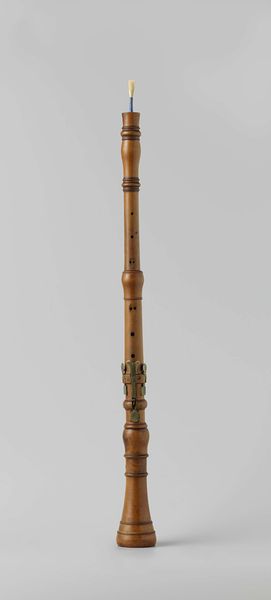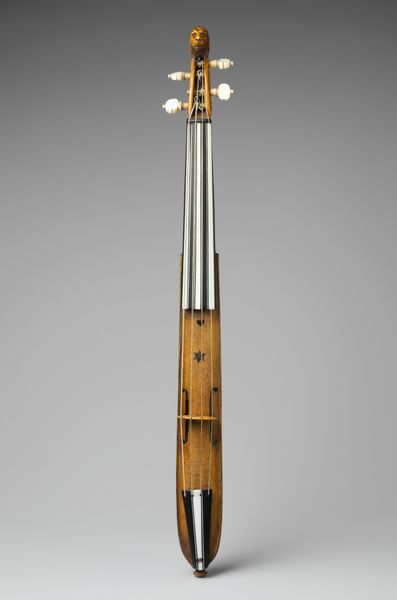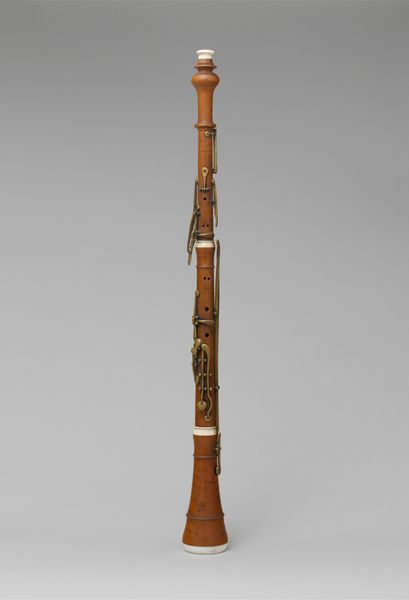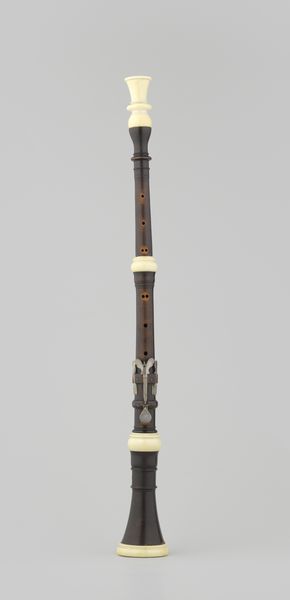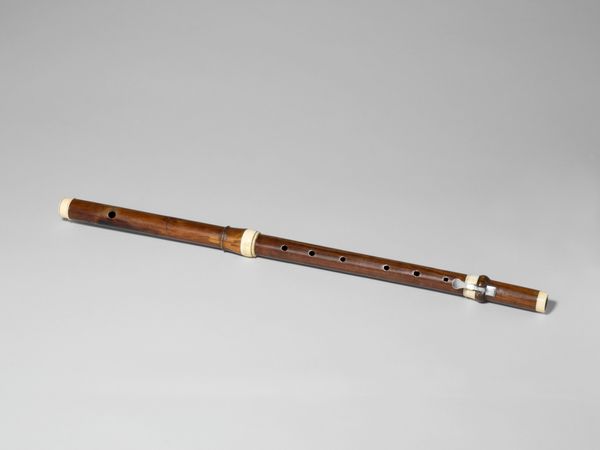
Dimensions: L. 57 cm (22-1/2 in.)
Copyright: Public Domain
Editor: Here we have an oboe, crafted between 1765 and 1810. It’s a beautiful wooden instrument currently residing at the Metropolitan Museum of Art. The simplicity and elegance of the lines really strike me. What formal qualities do you find most compelling? Curator: The elegant proportions are indeed noteworthy. Note the interplay between the cylindrical bore and the conical bell, further emphasized by the contrasting ivory mounts. How do you perceive their function within the overall structure? Editor: It seems the ivory creates a rhythm, segmenting the wood. The keys are fascinating—those little sculptural elements interrupting the otherwise clean lines. Are those functional disruptions or do they add a new layer to the overall texture? Curator: They introduce a certain tension, a visual counterpoint to the smoothness of the wood. Consider the way the light reflects off the metalwork compared to the matte surface of the wood. Does this contrast change your perception of the oboe? Editor: Yes, it does. I hadn’t really thought about the contrast between the materials, but the polished keys highlight the natural variations and texture of the wood. It's more than just an instrument, it's an object of artistic expression, carefully conceived. Curator: Precisely. By analyzing the formal arrangement, material composition, and interplay of textures, one can appreciate the artistic merit beyond mere function. This object challenges us to reconsider our perceptions of design and intentionality within functional art. Editor: That’s fascinating. Focusing on form really brought out elements that I would’ve completely missed otherwise. Curator: And hopefully broadened your understanding of how form conveys significance.
Comments
No comments
Be the first to comment and join the conversation on the ultimate creative platform.
